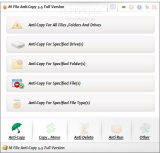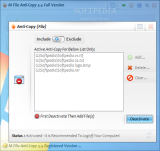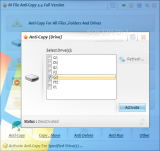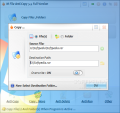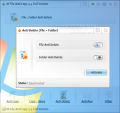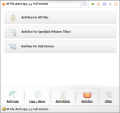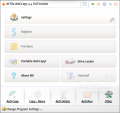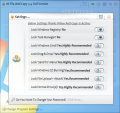Keeping files on your computer protected against various actions may seem for many users a tougher job than it is. Windows offers the means to impose restrictions for non-administrative accounts, but it is not always the most comfortable method for less advanced users.
M File Anti-Copy is a third-party solution designed mainly for preventing copying of files off your computer. It can also restrict running programs and block renaming or deleting actions.
The application is not free, and the developer charges $22.95 / €16.62, with little possibility of proper testing before shelling out the money. It works on all Windows operating systems from XP to 7; Windows 8 and above are not supported.
Installation is not a painful process, but it requires a computer restart for all the changes to take effect; we noticed that the final screen overlaps the option to reboot the system with the one for visiting the product page.
Upon registering, the application terminated on its own all of a sudden, with no hint on what had happened. However, this appears to be the normal behavior, since launching it again showed we were working with the full version of the program.
Looks are not necessarily impressive, but the simple layout shows the options in a clear and easy to access manner. Unfortunately, with M File Anti-Copy on the system you won’t be able to freely move any application window on the screen by simply dragging it by the title bar; instead, you have to right click said area and choose the “move” function.
In the case of the application itself, the developer created a button that allows this action.
The main screen shows the program’s anti-copy functions, which extend beyond files and folders onto specific file types only and even entire drives. A more extreme option that blocks the action indiscriminately for all drives, files, and folders is also available.
Apart from setting this sort of limitation, M File Anti-Copy can also lock the “move” function for specific targets (files and folders) to user-defined locations. Furthermore, it offers the possibility to protect data from being deleted or to keep programs from being launched through Anti-Run feature.
Blocking only certain programs from running is quirky in some cases, such as web browsers, because the function relies on the window title to achieve its purpose.
Setting any of these restrictions is fairly easy and most of the time only a few clicks are required, especially with actions that do not have specific targets. Defining explicit items involves browsing for them, because a drag and drop feature is not supported.
At a first glance, M File Anti-Copy may seem like a good program that can carry out the tasks, but during our tests we managed to bypass its protective measures extremely easily.
The application works only as long as there are no other file managers than Windows Explorer installed on the system. Using a solution such as Total Commander or XYplorer is all you need to complete said actions.
With the anti-delete option, which works indiscriminately on all files and folders, we could also perform the action from the above-mentioned managers, but only using the Shift+Delete shortcut.
On the other hand, we were unsuccessful in making a blacklisted program launch (except for web browsers). Nevertheless, there is one glitch: attempting to access a folder from Explorer named after a blocked program will automatically terminate Microsoft’s file manager.
M File Anti-Copy has many quirks and glitches, but the developer strived to eliminate alternative forms of bypassing the restrictions it imposes, and the proof is in the configuration panel of the application.
Here you can find the knobs for locking access to Task Manager, command-prompt, drag and drop functionality in Windows, along with functions such as CD burning, drive formatting, and “send to.”
However, today’s means of file sharing are extremely numerous and we were presented with no obstacle when sending a protected file via email. Alternatively, if text documents are involved, there is always the possibility to copy the content and paste it in a new file. With images, PrintScreen and Paint are a good combination for getting the content.
The Good
The Bad
Activating the anti-copy restrictions requires logging off the computer. Drag and drop functionality (which can be used for file copying) is disabled on all windows.
On Windows 7, the taskbar icon was available at all times, even when we set the program to minimize to system tray.
 14 DAY TRIAL //
14 DAY TRIAL // 
